SRC monitors industry trends through frequent communication with regulating agencies, and review of warning letters and enforcement actions. From our monitoring of FDA Warning Letters, we have noticed some recent trends in FDA enforcement and interpretation of the regulations of over-the-counter drugs. Bob MacDonald, SRC’s VP of Regulatory Services provides a breakdown of these trends.
Shared Equipment Usage
In SRC’s recent monitoring of Warning Letters (WLs), containing current Good Manufacturing Practices (cGMPs) observations, a strict interpretation of 21 CFR 211.42(c) under Subpart C – Buildings and Facilities has been noted.
“Operations shall be performed within specifically defined areas of adequate size. There shall be separation or defined areas or such other controls for the firm’s operations as are necessary to prevent contamination or mixups during the course of the following procedures:”
This portion of the code of federal regulations elaborates further these procedures to be inclusive of – receipt of components, holding, storage, manufacturing and processing, packaging, labeling, quarantine, storage, release, control and laboratory operations, and aseptic processing (as appropriate).
WARNING LETTER EXAMPLE:
“Your firm failed to maintain adequate separate defined areas necessary to prevent contamination or mix up (21 CFR 211.42(c))”
“Your firm manufactures over-the-counter (OTC) antibacterial hand soap, antiseptics, and hand sanitizers drug products. You manufacture these drug products using the same equipment that you use to manufacture numerous non-pharmaceutical materials in your facility, including industrial cleaners and disinfectants. It is unacceptable as a matter of cGMP to continue manufacturing drugs using the same equipment that you use to manufacture these non-pharmaceutical products due to the risk of cross contamination.
In response to this letter, confirm whether you will discontinue manufacturing drugs on shared equipment in your facility. If you intend to continue to manufacture both pharmaceutical and non-pharmaceutical products at your facility, provide a plan to how you will separate the areas in which you will maintain dedicated manufacturing equipment for your pharmaceutical manufacturing and industrial manufacturing operations.
In addition, provide a risk assessment for all drugs you had previously produced on equipment shared with industrial products. For each product, assess the risk of potential contamination due to the shared equipment, and provide your plans for addressing product quality and patient safety for any product still in distribution, including potential recalls or market withdrawals.”
SRC agrees that validation of the manufacturing process and cleaning procedures between batches and specifically between products with dissimilar pH, viscosity, or other characteristics is vital to address any concerns of carry over and/or contaminate. FDA’s current evaluations of the regulation, however, appear to push the interpretation that subsequent product manufacture of industrial cleaners cannot be on the same equipment as OTC drug products. Manufacturers must have dedicated areas and equipment for pharmaceutical products that are separate from non-pharmaceutical production.
This interpretation eliminates the allowance of “such other controls for the firm’s operations as are necessary to prevent contamination or mixups during the course of the following procedures:”
OTC Drug Establishments should consider the practicality of dedicating manufacturing equipment for their OTC manufacture and their ability to properly validate their processes to ensure proper cleaning and lack of carry over and/or contamination/residue from one product’s production to the other.
For OTC’s specifically, identification and evaluation of all cleaning and validation scenarios should be considered:
- Drugs with higher toxicity
- Drugs with higher drug potencies
- Drugs of lower solubility in their cleaning solvents
- Drugs with characteristics that make them difficult to clean
- Swabbing locations for areas that are most difficult to clean
- Maximum hold times before cleaning
Contact the SRC team for assistance in developing FDA compliance practices and Standard Operating Procedures (SOP’s). Our team is available to conduct Good Manufacturing Practices (GMP) auditing of your facility and provide you with recommendations to achieve compliance.
Active Ingredient Declaration (Misbranded)
Another recent trend in Warning letters is on the issue of similar names being used in labeling for a recognized active ingredient. An example of this from a recent Warning Letter was an instance where the Active Ingredient was expressed in the Drug Facts box as PCMX.
Per 21 CFR 201.66(c)(2) – “Active ingredient or Active ingredients followed by the established name of each active ingredient and the quantity of each active ingredient per dosage unit.”
The Warning Letter indicated:
“PCMX is a synonym or chemical abbreviation for chloroxylenol, this is not the established name as listed in an official compendium.”
“Because chloroxylenol is an article listed in the USP compendium, it is considered the established name for this active ingredient and must be identified as such in the Drug Facts panel in accordance with 21 CFR 201.66)c)(2).”
SRC recommends OTC Drug Establishments review their product listings to ensure active ingredient listings are consistent with the “established name” in The United States Pharmacopeia (USP) compendium. Using synonyms for the established name of an ingredient in the Drug Facts may lead to enforcement.
The SRC team will continue to observe industry trends and provide updates as they emerge. Please contact SRC for assistance in developing compliant market labels.

Bob MacDonald
VP of Regulatory Services
Posted 03/28/2023


